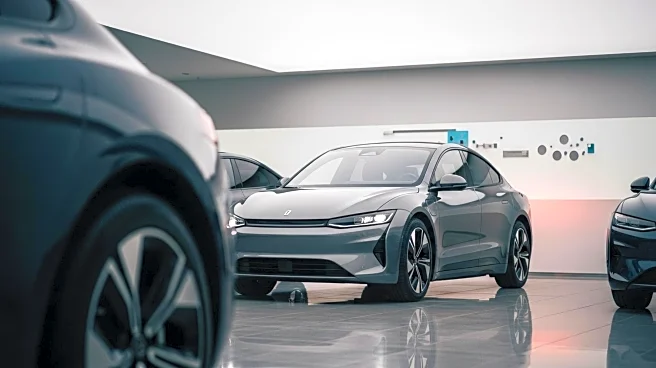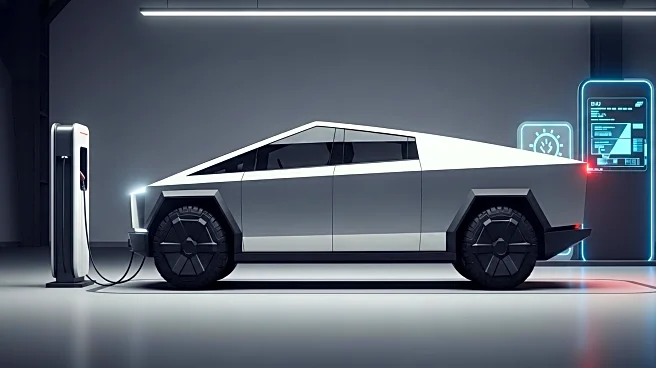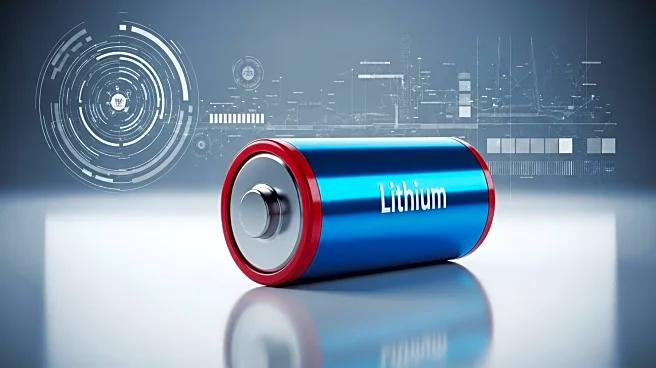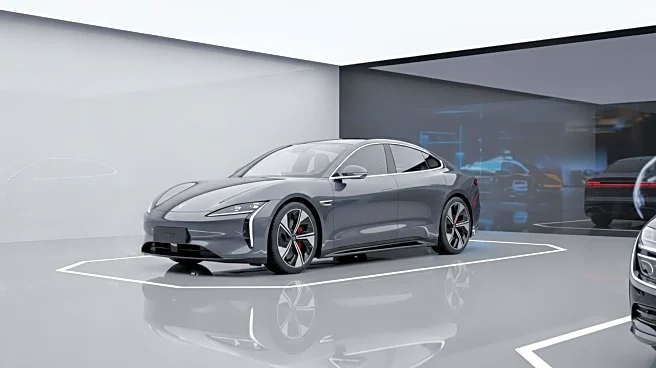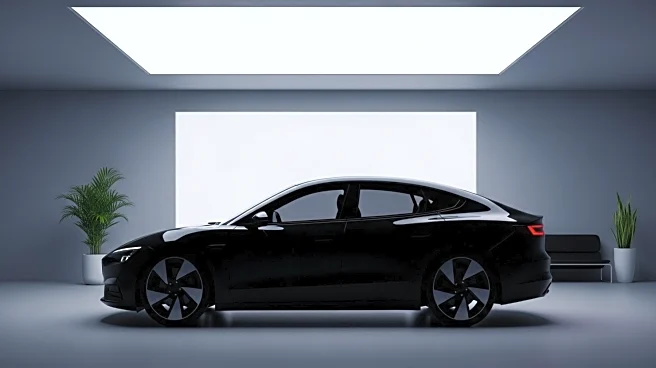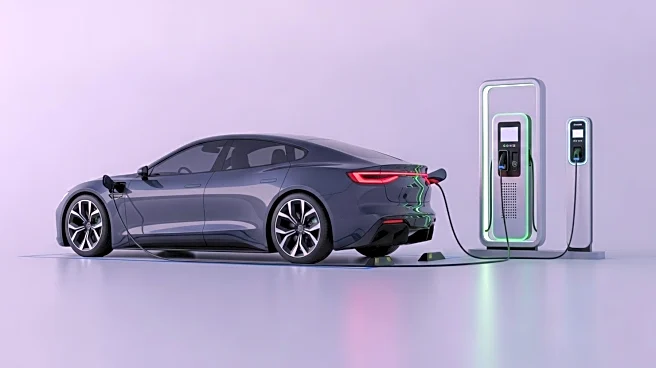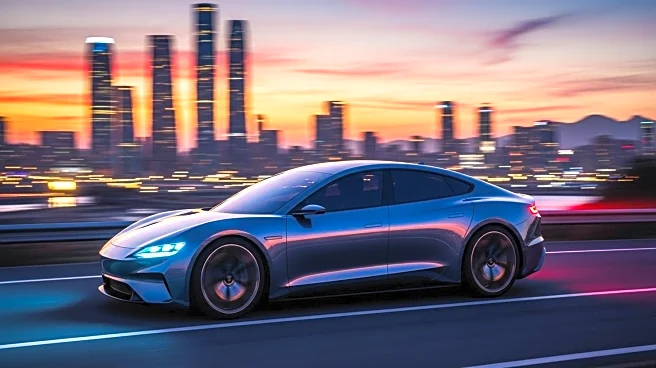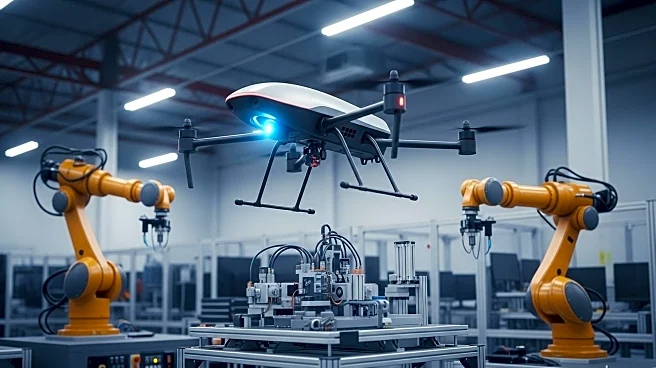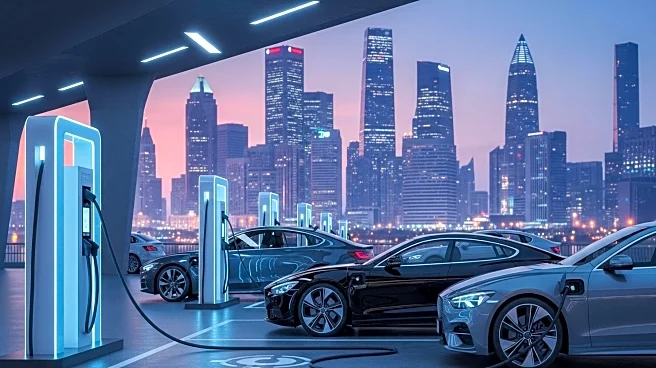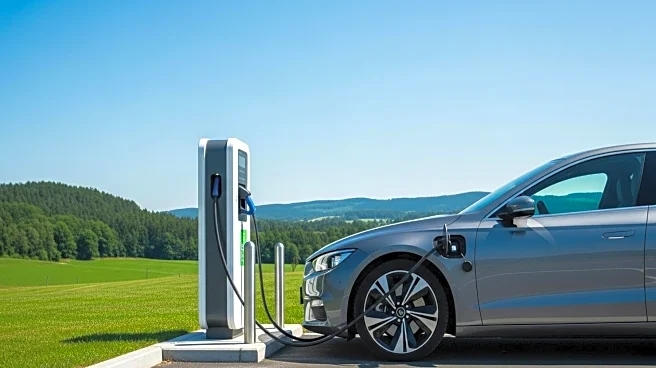What is the story about?
What's Happening?
Tesla, a major player in the U.S. electric vehicle market, is experiencing an unexpected situation where it has not sold out of its cars despite the looming phaseout of significant EV tax credits. The $7,500 tax credit for new EVs and the $4,000 tax credit for used EVs are set to be eliminated after September 30, 2025, prompting expectations of a surge in EV purchases. However, Tesla has been observed advertising its vehicles on platforms like YouTube, a move not commonly seen before, suggesting a need to boost sales. Despite accounting for nearly half of U.S. EV sales, Tesla still has inventory available, including models like the Tesla Model 3 and Model Y, with some regions showing reduced prices. This situation arises as the government has modified the phaseout rules, allowing vehicles with down payments and contracts in place to still qualify for the tax credit even if delivery occurs after September 30.
Why It's Important?
The presence of unsold Tesla inventory amid the tax credit phaseout is significant for several reasons. Firstly, it challenges the assumption that Tesla would experience a record-breaking quarter due to increased demand driven by the tax credit expiration. This could indicate potential challenges in maintaining sales momentum or shifts in consumer purchasing behavior. The advertising push suggests Tesla is actively seeking to stimulate demand, which may reflect broader market dynamics or competitive pressures. Additionally, the availability of inventory could impact Tesla's financial performance and market perception, as it may signal issues with demand forecasting or production alignment. The situation also highlights the importance of government incentives in driving EV sales and the potential impact of policy changes on consumer decisions.
What's Next?
As the deadline for the tax credit phaseout approaches, Tesla and other automakers are likely to intensify efforts to encourage EV purchases. This could involve strategic marketing campaigns, pricing adjustments, or promotional offers to clear inventory. The industry may also see increased lobbying for policy adjustments or extensions to maintain sales momentum. For consumers, the phaseout may prompt a rush to secure EV purchases before the credits expire, potentially leading to short-term spikes in sales. Tesla's future strategies may focus on enhancing demand through innovation, expanding market reach, or leveraging new technologies to attract buyers.
Beyond the Headlines
The situation with Tesla's unsold inventory could have deeper implications for the EV market and consumer behavior. It raises questions about the sustainability of demand driven by incentives and the potential need for automakers to adapt to changing policy landscapes. The reliance on tax credits underscores the role of government support in fostering EV adoption, which may influence future policy debates on environmental and energy strategies. Additionally, Tesla's advertising efforts may signal a shift in its marketing approach, potentially setting new industry standards for promoting EVs.
AI Generated Content
Do you find this article useful?
